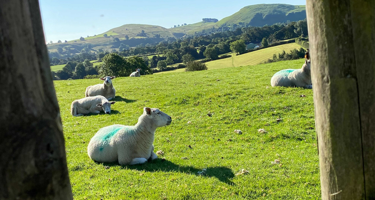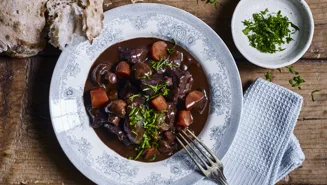
No, sheep's milk is not lactose-free but naturally contains lactose. Lactose is a type of sugar that occurs in all kinds of dairy. This means you will also find lactose in, for example, yoghurt and cheese made from sheep's milk.
Lactose content in sheep’s milk
The lactose level in sheep’s milk can vary quite a lot. It contains somewhere between 4.2 and 5.4 grams of lactose per 100 grams, but the exact amount varies depending on the specific breed of sheep, the animal's diet, as well as the lactation stage at the time of milking. In the earlier lactation stages, the lactose levels are generally higher.
But you can also find lactose-free sheep’s milk. Making lactose-free versions involves adding an enzyme known as lactase to break down the lactose into simpler sugars.
Whether or not it contains lactose, sheep’s milk has a recognisable flavour and a smooth, rich texture. The flavour is most often described as more robust than its cow counterpart. Because of its earthy notes, some people compare it to dairy products from goats though sheep’s dairy flavour is usually less earthy, and some find it has a lot of depth.

Lactose in sheep’s milk vs cow’s milk
While lactose levels can vary depending on whether, for example, it is skimmed milk, whole milk, or something else, cow's milk usually contains about 4.7-5 grams of lactose per 100 grams. Sheep's milk has a varied range, containing approximately 4.2-5.4 grams per 100 grams, making it lower in lactose at the minimum but potentially higher at the maximum.
Does sheep’s milk have less lactose than other milk types?
As detailed above, sheep’s milk usually has slightly less lactose than its cow counterpart. In comparison, goat’s milk generally contains around 4.1 grams of lactose per 100 grams. Read more about lactose levels in goat milk.
Sheep's milk also has a higher lactose content than buttermilk. The fermentation process in buttermilk, aided by added bacterial cultures, breaks down milk sugar into lactic acid, resulting in a tangy product with varying lactose levels, typically between 2-4 grams per 100 grams, depending on the specific production method and fermentation time.
Read more about buttermilk in our article ‘Is buttermilk lactose-free?’.
The same good flavour and texture
Maintaining the same good flavour and texture, lactose-free sheep’s milk offers a delightful alternative to regular sheep’s milk. Its nuanced, deep taste and creamy consistency are preserved in the lactose-free version, making it a perfect option, whether you prefer it in a refreshing glass on its own or incorporated into your favourite dishes.
We do not produce sheep's milk at Arla, but we celebrate the diversity and richness that different types of milk bring to the table.
If you are curious to learn more, read our article 'What is lactose-free milk?' and enjoy the goodness of milk, in all its forms.







































